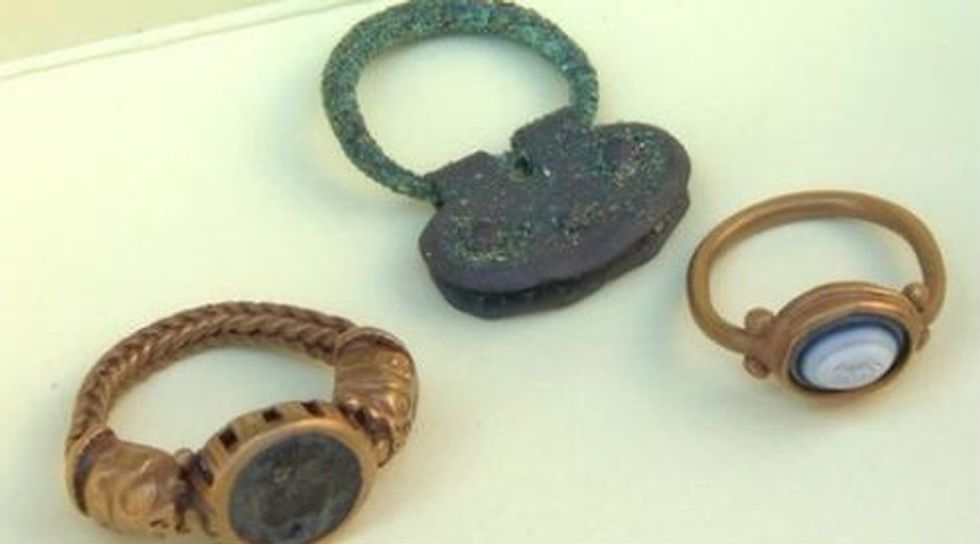
Image source: Twitter

A pair of Roman golden rings and a silver belt buckle dating back to the fourth or fifth century have been discovered in Ireland.
Two Roman rings and a silver belt buckle found at a beach in County Down by Brian Murray using a metal detector,... https://t.co/twyzEyZZ7V
— Archaeology Rocks (@archaeorocks101) June 11, 2015Brian Murray, 65, is a retired civil servant and stumbled upon the treasures while searching for more recent artifacts with his metal detector on Murlough Beach in February. Specifically, Murray was hoping to find American Army badges or bullet cases, since the U.S. Army used Murlough Beach as a training facility during World War II.
"I went down [to] the beach and came back and I found the small ring first and within five minutes I had retrieved the other big ring and the buckle," Murray told the Independent.
According to Greer Ramsey of the National Museums in Northern Ireland, the Roman rings are a rare discovery, citing an ongoing debate about the extent of Roman contact in Ireland, since the ancient empire never launched a full-scale invasion of the territory.
"How it actually ended up in the sand dunes is a matter of conjecture," Ramsey said.
Two possible explanations are that the rings might have belonged to someone who was buried at sea, or that they were intentionally buried by someone as an offering to a Roman god ahead of their sea voyage.
Whatever the rings' origins, experts from the British Museum will determine what they are worth and return them to the National Museums in Northern Ireland. The British Museum will also decide the exact location where the rings were discovered, since part of Murlough Beach is owned by the National Trust and another part is held by the Crown estate.
According to the Independent, Murray had a permit to detect metal on the Crown estate, but not the National Trust. If the rings were found where Murray had a permit to be searching, he'll get half of their value and the other half will go to the National Museums in Northern Ireland.
But if Murray discovered them on the National Trust, it's unclear whether he'll get anything for the historical discovery.
(H/T: The Independent)
–
Follow Jon Street (@JonStreet) on Twitter